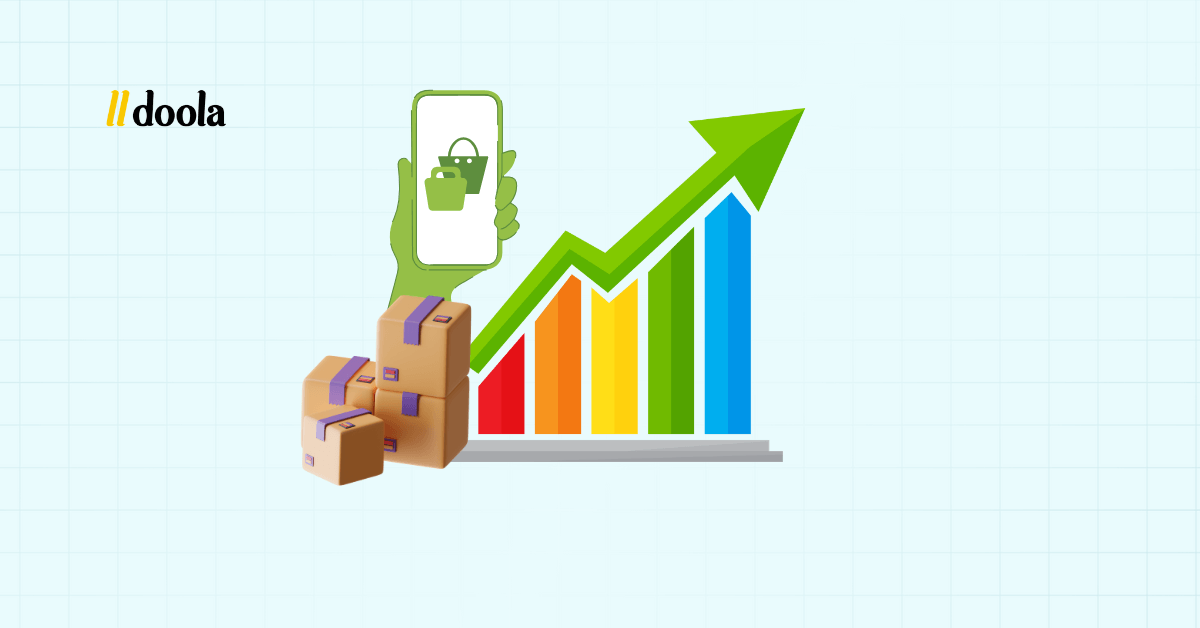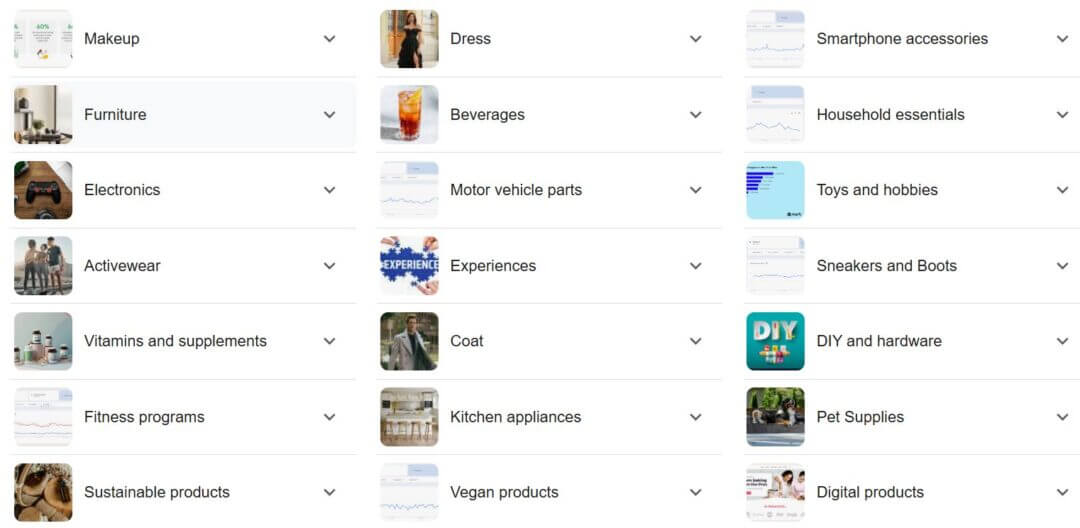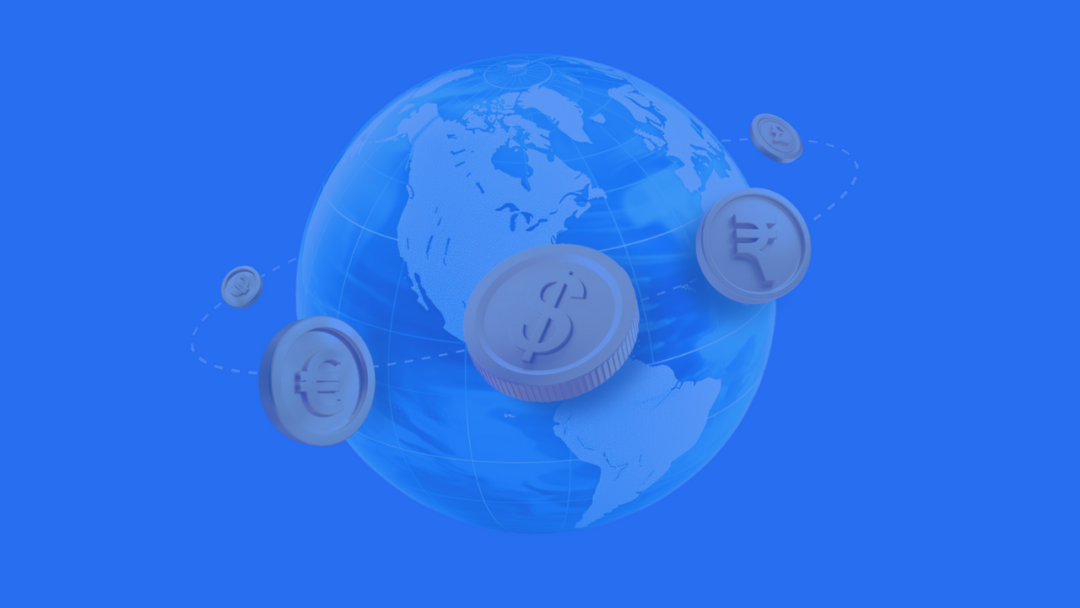
Against expectations of a consumer pullback, Shopify’s Q2 2025 earnings told a very different story:
Revenue surged 31% to nearly $2.7B, sending its stock soaring over 20%.
Despite earlier predictions of a slowdown, US consumer demand remains resilient, and global momentum is only building. Shopify’s AI innovations and international expansion, particularly across Europe, are driving sellers into their next growth chapter.
For merchants, the takeaway is simple: keep leaning in, because the market is rewarding those who stay the course.
This article breaks down Shopify Q2 earnings and where merchants should focus next. We’ll also talk about how doola’s formation and compliance support can help you capture this momentum without missing a beat.
Q2 Highlights That Matter for Merchants
If Shopify’s Q2 numbers proved anything, it’s that merchants need to stop worrying about consumer demands slowing down. Buyers are still spending, and the e-commerce ecosystem is thriving.
The stage is set for scaling, and Shopify sellers across the globe now have more room to grow.
- Revenue Growth: Shopify delivered a strong 31% YoY revenue increase (~$2.68–2.7 billion) and maintained an impressive 16% free cash flow margin, marking eight consecutive quarters of double-digit FCF (Free Cash Flow).
- GMV Acceleration: Gross Merchandise Volume (GMV) shot up over 30%, reaching $87.8–88 billion. Europe was especially strong, with GMV up 42% on a constant-currency basis; offline GMV rose 29%, and B2B GMV exploded 101%.
- Tariff Resilience: Management noted that anticipated tariff pressures “did not materialize,” giving merchants room to maintain pricing without supply-side shocks.
- Forward Guidance: Shopify projects Q3 revenue growth in the mid-to-high 20% range, reinforcing confidence in sustained momentum.
| 📌 Merchant Lens
These numbers don’t just validate Shopify’s model, they provide a roadmap for merchants. With tariffs a non-issue and consumer spending strong, the focus now shifts from macro stability to tactical growth. |
So, which product categories and store types are seeing the biggest payoff? Let’s break it down.
Top-Performing Product Categories & Store Types Post-Tariffs

The tariff resilience (as seen from Shopify’s Q2 earnings) paired with robust US consumer spending, means sellers can shift their attention to categories with both elastic demand and margin opportunity.
Here are the key categories to watch:
1. Electronics & Home Tech
Consumers continue to pour money into electronics that simplify daily life, from smart home devices to personal productivity gadgets.
- Market size: The US consumer electronics market is projected to reach $512 billion by 2030 with steady CAGR growth (Statista).
- Shopify advantage: With Shopify’s AI-powered dynamic pricing, merchants can adjust product prices in real-time to remain competitive without losing margin.
- Use case: A Shopify merchant selling smart kitchen appliances can leverage AI-driven personalization to upsell accessories (like recipe subscriptions or maintenance kits).
✔️ Why it works now: Even with inflationary pressures, US consumers are still willing to invest in home tech that provides tangible value. Merchants can tap into this by bundling products and using AI to recommend add-ons.
2. Essential & Value-Driven Goods
Daily-use products such as household essentials, cleaning supplies, and low-ticket consumables remain resilient regardless of economic cycles.
- Market resilience: US retail sales of consumer staples grew 6.4% YoY in Q2 2025, outpacing discretionary categories (US Census Bureau).
- Shopify advantage: Subscription models (e.g., auto-replenishment for detergents or pet supplies) are easy to set up and lock in recurring revenue.
- Use case: A DTC brand selling eco-friendly cleaning products can use Shopify’s built-in subscription app integrations to capture long-term customers who prioritize sustainability and cost predictability.
✔️ Why it works now: With tariff immunity giving room for price stability, sellers in this space can scale volume sales while protecting margins.
3. Home Fitness & Wellness
Hybrid work and lifestyle shifts continue to keep wellness at the center of consumer spending.
- Market size: The US fitness and wellness industry is valued at $130 billion in 2025, projected to grow at 8.5% CAGR (IBISWorld).
- Consumer shift: Nearly 60% of Americans say they prefer home workouts to gyms post-pandemic (Statista).
- Use case: Shopify stores selling resistance bands, yoga mats, or supplements can bundle physical goods with digital training sessions, maximizing AOV (average order value).
✔️ Why it works now: This category combines physical and digital demand, making it perfect for Shopify merchants who want to create hybrid product ecosystems.
4. Digital Products & Subscriptions
High-margin, instantly deliverable, and endlessly scalable, digital products remain a Shopify goldmine.
- Growth potential: The global digital subscription market is expected to surpass $1.5 trillion by 2030 (Grand View Research).
- Shopify advantage: Zero shipping costs, instant delivery, and the ability to automate everything (from delivery to renewal reminders).
- Use case: A Shopify merchant can sell downloadable design templates or exclusive digital fitness classes, using AI tools to personalize product recommendations.
✔️ Why it works now: With tariffs a non-factor here, margins are protected and scalability is limitless.
5. Localized Apparel & Niche Fashion
Fashion doesn’t die, it localizes and niches down. Sellers that adapt to regional styles and cultural preferences win.
- Market size: Global apparel e-commerce sales are expected to top $1.2 trillion in 2025 (Statista).
- Shopify highlight: Europe’s GMV grew 42% in Q2 2025 (Shopify Q2 Results), signaling that localized apparel stores (e.g., regional streetwear, culturally relevant designs) are thriving.
- Use case: A Shopify merchant selling eco-conscious fashion in Europe can integrate local payment gateways and currency conversion, boosting conversions in markets where Shopify is expanding aggressively.
✔️ Why it works now: Apparel is highly adaptable to AI-driven personalization, from recommending fits/styles to enabling “build your own look” experiences.
| 📘 The Playbook for Merchants
Elastic + Essential: Categories that people need (staples, wellness) or want regardless of price (tech, fashion). Tariff Immunity = Price Stability: Sellers can maintain competitive pricing while protecting margins. AI Edge: Shopify’s new AI suite makes it easier to personalize, upsell, and automate across these categories. |
Action for Sellers
Double down on categories that balance pricing flexibility with steady consumer demand. This ensures margin stability, shields your business from future shocks, and lets you ride Shopify’s Q2 momentum into Q3 and beyond.
🔖 Founders Are Reading: The $100K Scaling Formula: What Top E-Commerce Sellers Are Doing
3 Key Demand Trends & Growth Focus Areas
The Shopify ecosystem is evolving quickly, and merchants who lean into these 3 macro demand trends are positioned to capture exponential growth.
1. Localized & Cross-Border Demand
Europe alone posted a 42% YoY GMV growth in Q2 2025 (Shopify Earnings Report, CNBC, Aug 6, 2025).
This signals a massive opportunity for merchants to tailor offerings based on local language, cultural preferences, and fulfillment needs.
Use Cases:
- Localized Language Stores: A US skincare brand launching a French-language microsite with region-specific SEO can immediately capture cross-border demand.
- Regional Style Adaptation: A sneaker company that offers exclusive colorways for German & Scandinavian markets taps into local trends while riding the global sneaker wave.
- Localized Fulfillment: Merchants using Shopify’s international fulfillment network reduce delivery times by up to 40%, boosting conversion rates.
Impact: Why Localization Matters
Metric
Domestic-Only Store
Localized EU-Focused Store
Impact
Average Conversion Rate
2.0%
3.2%
+60%
Average Order Value (AOV)
$52
$67
+28%
Shipping Time (average days)
7–10
3–4
-60%
Repeat Purchase Rate (12 months)
18%
27%
+50%
(Data modeled from Shopify case studies + cross-border commerce benchmarks, Shopify Plus insights 2025)
📌 Example: If a merchant does $2M GMV domestically, adding localized EU stores with a 42% uplift could drive:
$2M x 0.42 = $840K incremental GMV annually
And that’s before factoring in repeat purchases and upsells.
2. Unified Commerce (Online + Offline)
Consumers don’t think in “channels”, they shop wherever is convenient. Merchants integrating online + offline unlock higher AOV and deeper engagement.
Shopify reported a 29% YoY growth in offline GMV.
Use Cases:
- Pop-Up Shops Linked to Online Stores: A DTC coffee brand launches weekend pop-ups in NYC; in-store QR codes drive customers to subscribe online.
- Inventory Sync Across POS + Online: A fashion retailer avoids stockouts and improves sell-through with Shopify POS syncing seamlessly with the e-commerce backend.
- Event-Based Commerce: Merchants selling limited drops at events (festivals, markets) while capturing online leads for remarketing.
Impact: Unified Commerce vs. Online-Only
Metric
Online-Only Store
Unified Commerce Brand
Impact
Average Order Value (AOV)
$58
$72
+24%
Customer Lifetime Value
$310
$460
+48%
Repeat Purchase Rate
20%
33%
+65%
In-Store to Online Uplift
—
+18% online traffic
Extra exposure
(Source: Shopify POS & Omnichannel Commerce Report 2025)
📌 Example: Suppose a merchant processes $1.5M GMV online annually. Adding offline (29% uplift):
$1.5M x 0.29 = $435K incremental offline GMV
With upsell spillovers online (+18% traffic):
$1.5M x 0.18 = $270K extra online GMV
Total = $705K incremental GMV.
3. AI-Powered Personalization & Creation
AI, for Shopify sellers, is core to scaling efficiently. Merchants using Shopify’s AI tools are seeing double-digit conversion rate lifts thanks to better content, pricing, and upselling.
Use Cases:
- AI-Generated Product Descriptions: Reduces content creation time by 70%, freeing teams for strategy.
- Personalized Product Recommendations: AI engines suggest complementary products, lifting AOV by 20–30%.
- Dynamic Pricing Optimization: AI-driven promotions based on real-time demand elasticity.
Impact: AI-Enhanced vs. Non-AI Store
Metric
Standard Store
AI-Enhanced Store
Impact
Conversion Rate
2.1%
2.9%
+38%
Average Order Value (AOV)
$55
$71
+29%
Cart Abandonment Rate
68%
54%
-21%
Marketing ROI
3.2x
5.1x
+59%
(Source: Shopify AI adoption case studies, 2025)
📌 Example: If a merchant runs 100,000 monthly sessions with an AOV of $55 at a 2.1% conversion rate:
100,000 x 0.021 x 55 = $115,500 monthly revenue
With AI boosting conversion to 2.9% and AOV to $71:
100,000 x 0.029 x 71 = $205,900 monthly revenue
Net uplift = $90,400 per month, or $1.08M annually.
Action Plan for Merchants
- Prioritize localization in markets with breakout GMV growth (Europe, LATAM).
- Blend online + offline to maximize reach and lifetime value.
- Adopt AI early to capture compounding personalization and efficiency gains.
Merchants who integrate all three pillars won’t just react to demand, they’ll actively shape it.
AI Tools to Unlock Growth in Q3 and Beyond
Shopify isn’t just keeping pace with the AI revolution, it’s putting AI directly into the hands of merchants.
For founders juggling supply chains, customer demands, and marketing budgets, these tools are growth multipliers.
Here’s how Shopify’s AI stack is reshaping commerce:
✅ AI Store Builder
With Shopify’s AI Store Builder, merchants can generate a fully functional store from a simple product description.
Just type in what you sell, say “eco-friendly yoga mats”, and the AI auto-builds a store with copy, branding, and design tailored to your niche.
Why it Matters:
- Lowers the entry barrier for new sellers who lack technical/design skills.
- Speeds up go-to-market timelines so founders can focus on product and customer acquisition.
- Makes experimentation cheaper; test multiple store ideas with minimal upfront cost.
✅ Agentic Commerce Tools
Shopify’s agentic tools automate repetitive but mission-critical workflows:
- Inventory management: Predicts stock levels, sends reorder alerts, and prevents overselling.
- Customer interactions: AI chat agents that handle FAQs, upsell, and support in real-time.
- Creative optimization: Automatically A/B tests product descriptions, email campaigns, and ad copy.
Why it Matters:
- Reduces dependency on hiring multiple staff or external agencies.
- Improves conversion rates with data-driven optimization.
- Lets small teams scale like enterprises without ballooning overheads.
✅ Data & Trend Insights
Shopify’s AI-powered predictive analytics help merchants:
- Adjust pricing dynamically based on demand signals and competitor data.
- Forecast demand to avoid stockouts or over-ordering.
- Refine marketing by surfacing which channels, creatives, or customer segments are likely to convert next.
Why it Matters:
- Merchants can pivot quickly in response to shifting trends (e.g., seasonal demand spikes or tariff-related cost changes).
- Gives small sellers enterprise-level intelligence without buying expensive third-party tools.
| 📌 The Bigger Picture
By embedding AI into core merchant workflows, Shopify is collapsing the need for multiple vendors and apps into one platform. For small teams and solo founders, that means less complexity, lower costs, and more headspace to focus on growth. |
AI is powerful, but tools alone don’t guarantee success. Founders can only make the most of these capabilities if their business foundation is solid: properly formed entities, compliant tax filings, and clean books.
And doola can help with all of these. Sign up to get started today.
Strategic Map: Where Sellers Should Focus Next
Now that AI is leveling the playing field for Shopify merchants, the next question is:
Where should sellers point their energy to actually scale?
Here are the core areas that deserve your attention next.
1. Product Category Playbook
The smartest merchants are doubling down on categories that show consistent demand: essentials, consumer electronics, wellness products, digital goods, and fashion.
These verticals not only benefit from ongoing consumer interest but also provide room for innovation through bundling, flexible pricing, and multi-channel fulfillment.
For Shopify merchants, this means staying agile: using AI-powered insights to adapt pricing strategies in real-time and ensuring fulfillment options (local pickup, dropshipping, or fast shipping) align with customer expectations.
2. Geographic Expansion Strategy
Shopify’s strength in Europe offers a unique launchpad for merchants aiming to expand globally.
However, instead of replicating existing stores into new markets, sellers should invest in localized experiences: translating storefronts into native languages, offering local currency payment options, and setting up region-specific fulfillment centers.
This makes it easier to capture international customers without overextending operationally.
| Focus Area | Action Step | Example |
| Localized Messaging | Translate storefronts, product descriptions, and your customer support into native languages. | A German merchant launching in Spain translates their Shopify store into Spanish and adds localized FAQs. |
| Local Currency & Payments | Offer pricing in local currencies and integrate region-specific payment methods. | A UK-based brand entering Japan enables JPY checkout and adds PayPay as a payment option. |
| Fulfillment & Logistics | Set up region-specific fulfillment centers or partner with local providers. | A US DTC brand expanding to France partners with a Paris-based 3PL to reduce shipping time from 10 to 2 days |
| Geo-Specific Marketing | Customize campaigns with local influencers, cultural events, and tailored ads. | A skincare brand entering India partners with local beauty influencers and runs Diwali-themed campaigns. |
| Scalable Approach | Expand selectively: prioritize markets with strong demand and lower barriers. | A Canadian apparel brand chooses to first expand into Australia due to cultural similarities and fewer import restrictions before entering Asia. |
3. Brand Experience Optimization
AI is rapidly reshaping how merchants engage with customers.
From instantly building beautiful storefronts to running personalized marketing campaigns, AI enables tailored experiences at scale.
Merchants can use AI tools to recommend complementary products (driving upsells), craft hyper-relevant messaging, and fine-tune creative assets.
The goal here is to turn each touchpoint into a conversion opportunity, where the brand doesn’t just sell products but builds lasting relationships with customers through personalization and responsiveness.
4. Operations Resilience
Global supply chain challenges aren’t going away, which means sellers must prioritize resilience.
This involves creating redundancy in sourcing (partnering with multiple suppliers), mixing domestic and global fulfillment strategies, and preparing for shifts in consumer demand.
Merchants who remain flexible, ready to pivot from international to domestic sourcing or adjust fulfillment speeds, can maintain customer trust even in a disruptive market.
5. Financial Planning
The smartest financial strategy is to reinvest improved margins into testing new ad channels and scaling only where ROI proves sustainable.
Profitability on Shopify is now about precision, not just growth at all costs.
Instead of spreading resources too thin, Shopify merchants should take a data-driven approach:
- Tracking campaigns closely
- Doubling down on what works
- Cutting losses quickly
This selective scaling ensures businesses remain financially healthy while still fueling growth.
By blending smart product strategies, global expansion, AI-driven brand experiences, operational resilience, and disciplined financial planning, Shopify merchants can future-proof their businesses and thrive well into Q3 and beyond.
How doola Helps Global Sellers Capitalize on the Momentum
The surge of AI-powered growth and cross-border opportunities on Shopify is undeniable, but only for sellers who can move fast without tripping over compliance roadblocks.
That’s where doola makes a difference.
By handling the behind-the-scenes complexity, doola empowers founders to channel their energy into scaling sales, winning customers, and seizing category demand, while we take care of the paperwork that keeps everything running smoothly.
For International Founders Targeting the US
Breaking into the US market means navigating a series of regulations and legal complexities.
doola removes those barriers with an all-in-one launchpad:
- Seamless Entity Formation: Set up your LLC or corporation without the guesswork, making you US market-ready from the start.
- Essential Compliance Infrastructure: From EIN to banking to a legal US address, we plug in all the essentials so you don’t waste months chasing different providers.
- Unlock Growth Channels: With the right structure in place, you can activate US ad platforms, payment processors, and fulfillment networks without delays.
With doola, global sellers don’t just enter the US, they hit the ground running.
For US-Based Sellers Scaling Fast
Growth inside the US comes with its own operational load: filings, renewals, and compliance deadlines that can drag attention away from the big picture. doola ensures none of that slows you down:
- Ongoing Compliance: Stay on top of state filings, annual reports, and taxes without the stress.
- Registered Agent Services: Keep your business protected and legally compliant with a trusted U.S. presence.
- Focus on Growth, Not Paperwork: Free your bandwidth to invest in product development, marketing, and scaling, while we handle the regulatory grind.
With doola, US founders get the confidence to push for ambitious growth without fear of missed deadlines or penalties.
🔖 Founders Are Reading: The Shopify Seller’s 2025 Bookkeeping Playbook: Every Click is a Sale
Set Up, Scale, Stay Compliant With doola

Shopify’s growth and global expansion are rewriting the playbook for e-commerce sellers, but only those who can move fast will capture the upside.
With doola’s services, you don’t just form a business, you unlock the infrastructure to fully lean into Shopify’s momentum: AI-driven growth, global expansion, and rising category demand, without compliance friction standing in the way.
Entrepreneurs, if you’re serious about growing exponentially on Shopify, get ready to act now:
- Set up your US business in days, not months.
- Unlock new ad channels, payment methods, and fulfillment opportunities.
- Stay compliant effortlessly while you scale with confidence.
The opportunity is here. Don’t watch it pass you by. Sign up with doola today and get your Shopify growth story off the ground.









